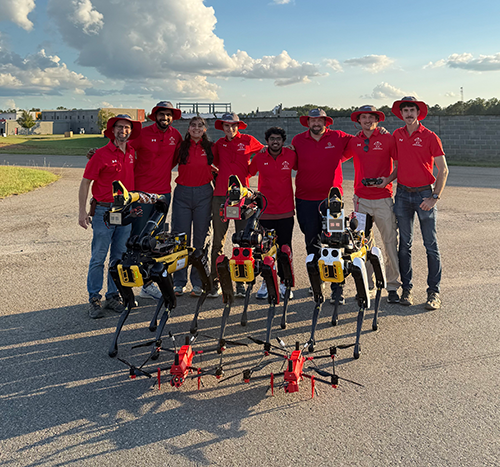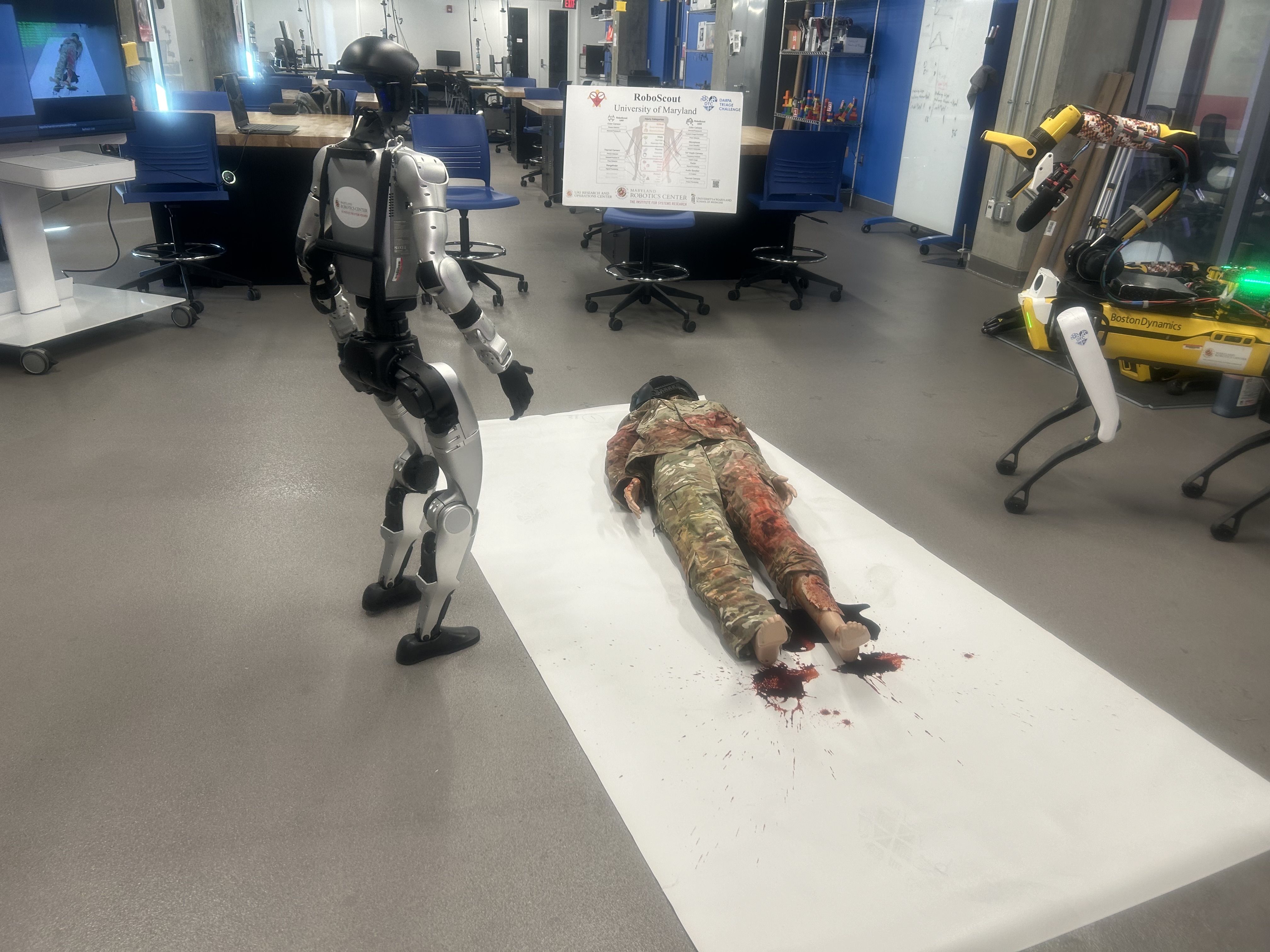 |

|
 |
From left: Professor Derek Paley (aerospace engineering), Srijal Poojari (Ph.D. candidate, electrical and computer engineering), Assistant Research Professor Kleio Baxevani (aerospace engineering), Zachary Bortoff (Ph.D. candidate, aerospace engineering), Vivek Mange (Faculty Specialist, aerospace engineering), Rob Neuner (Operations Director, UMD UAS Research and Operations Center), Chris Titus (Engineer, UMD UAS Research and Operations Center), Josh Gaus (Lead UAS Engineer, UMD UAS Research and Operations Center). |
|
A University of Maryland (UMD) team that is participating in the Defense Advance Research Projects Agency Triage Challenge (DTC) has achieved new successes during Year Two of the three-year competition.
Following a wrap-up event in Georgia that included two simulated disaster scenarios—a daytime air crash and a nighttime convoy assault—the team finished in second place, up from third place last year. The meet was held in late September and early October.
The DTC brings together teams from the private and non-profit sectors as well as from universities. RoboScout was the top university team for the second year in a row, and also received the “No One Left Behind” award for most casualties found. First place went to the research and development organization Battelle, which also landed the top spot in the first year.

An android and a robotic dog assist a patient during a demo conducted by members of the RoboScout Team at UMD’s Robotics and Autonomy Laboratory.
The objective of the challenge is to spur the development of systems in which aerial and ground robots assist in mass casualty situations, which often overwhelm the capabilities of human response teams.
Saving lives in such situations can depend on quickly locating victims and performing triage. Intelligent robots can be used to find people in need of care and assess their injuries, allowing the human responders to allocate resources more effectively.
To accomplish these tasks, RoboScout utilizes sensor-equipped ground robots—including three Boston Dynamics Spot dogs named for the famous rescue dogs Apollo, Balto, and Cairo—and pairs them with custom-made uncrewed aerial vehicles (UAV) engineered and operated by the UMD UAS Research and Operations Center (UROC) in California, Maryland.
The team not only tested its system in competition but also had the chance to use it in a separate scenario in which medics from the U.S. Army worked alongside the robots. It was the first-ever test of this kind, and UMD was one of only four teams given the opportunity.
For this scenario, RoboScout developed a mobile phone interface that the medics could use to track casualties detected by the RoboScout UAVs. The Spot dogs, meanwhile, were equipped with speakers and microphones that enabled them to call out to the medics and listen to responses.
Derek Paley, Willis H. Young Professor of Aerospace Engineering, leads the RoboScout team, which is composed both of students and UMD staff, including personnel from UROC. He attributes the team’s success, in part, to its “strong culture of testing and integration.”
“We have a number of testing events throughout the year in which we work with our collaborators from the UMD School of Medicine,” Paley said. “We’ve established a robust testing tempo, with internal deadlines prior to the competition. We actually go out and run our own version of a mass casualty scenario ahead of the event.”
“There are a million ways for a complex system like this to break, and our advance testing really helps us prepare for any contingencies,” he said.
And the story continues. The team’s strong showing, two years in a row, has won it a spot in the competition’s third year, which culminates in a finals event to be held in Texas in November 2026.
November 14, 2025
|

